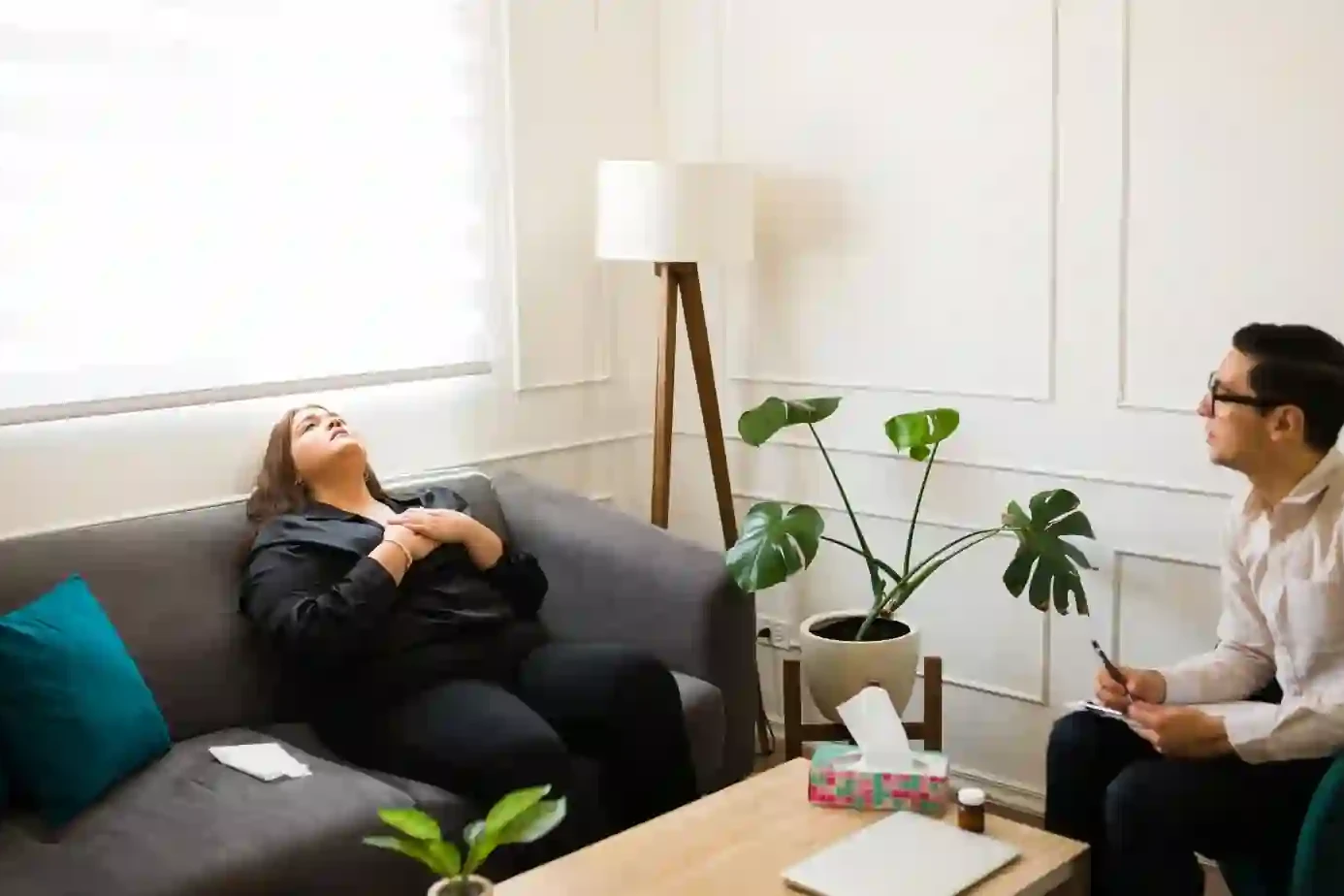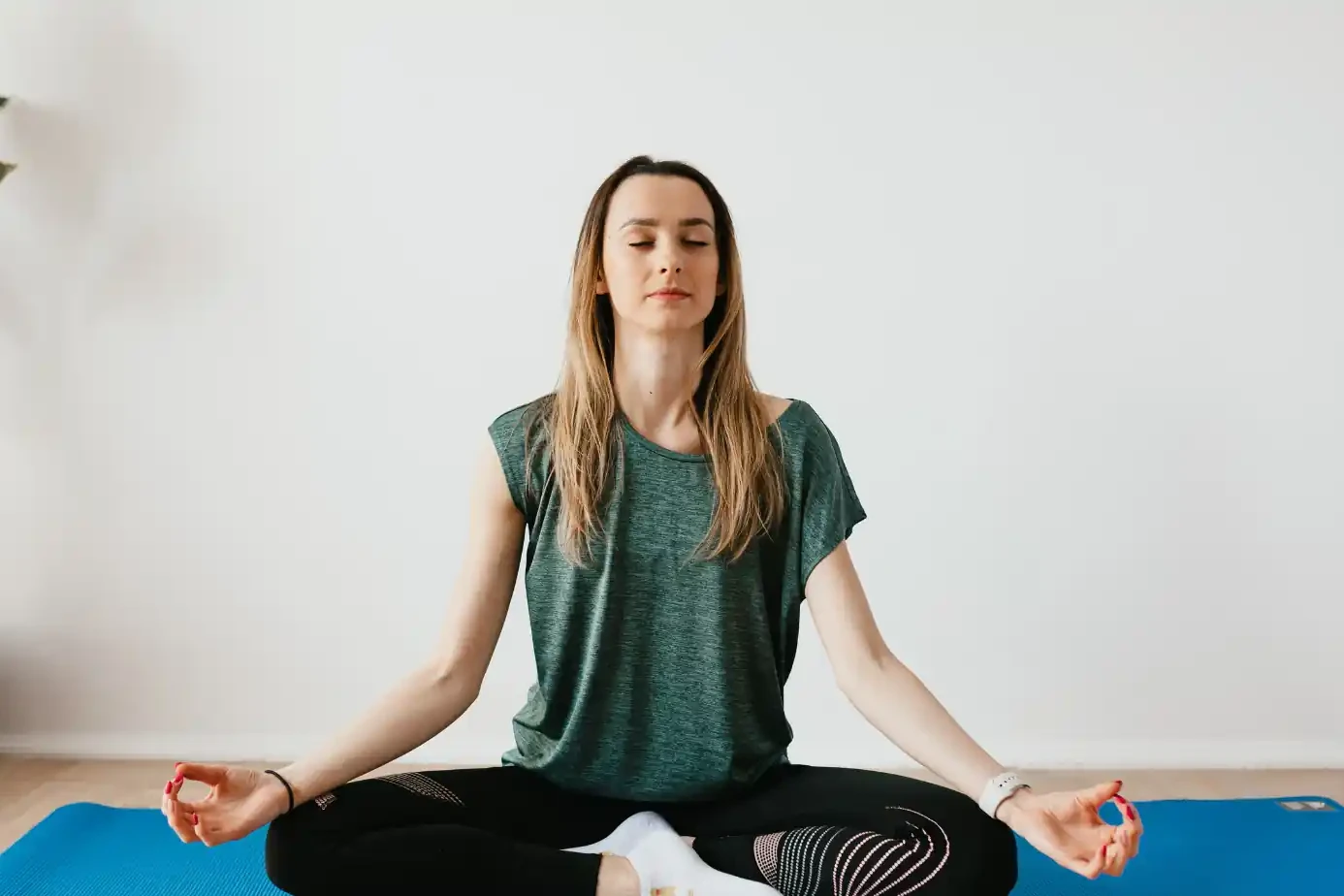Have you ever spent hours staring at the ceiling, trying to fall asleep but your mind just won’t stop racing? You’re not alone. Sleep issues are becoming more common as our lives grow more stressful. But there’s a gentle, natural way to calm your mind and relax your body yoga.
Yoga is more than just stretching; it’s a powerful tool to ease mental tension and physical stress. And when done before bed, it can work wonders. In this blog, we’ll walk you through five effective yoga poses for better sleep and relaxation. Each pose is simple, beginner-friendly, and designed to help your body unwind.
Whether you’re struggling with insomnia, anxiety, or just looking for a peaceful bedtime ritual, this guide will help. Get ready to reclaim your nights.
Table of Contents
ToggleWhy is Yoga a Natural Remedy for Sleep Problems?
Sleep doesn’t come easily to everyone. Stress, anxiety, and long screen time hours can throw off our internal clock. Yoga can act like a natural sleeping pill, minus the side effects.
When you practice yoga at night, your body shifts into “rest mode.” Deep breathing slows down your heart rate. Your muscles let go of tightness. Mentally, you’re brought back to the present moment. All these help the body wind down.
What does science say about yoga’s effect on sleep quality?
Modern research agrees: yoga really does improve sleep.
According to Harvard Health Publishing, yoga improves both the quality and duration of sleep. It helps reduce insomnia, especially in older adults and people with anxiety. The NIH also notes that yoga lowers stress levels, a major sleep disruptor.
Stat Alert: According to a 2020 study by NCCIH, 55% of yoga users said it helped them sleep better. Another 85% said it helped reduce stress.
That’s a clear sign that yoga poses for better sleep and relaxation actually work
Benefits of Practicing Yoga Before Bed
- Alleviates stress and promotes relaxation, preparing the body for restful sleep.
- Improves circulation, which can help regulate body temperature and facilitate deeper sleep.
- Balances energy levels, preventing restlessness and insomnia at night.
- Leads to more consistent, restorative sleep patterns over time.
Adding Relaxing Yoga Poses to your bedtime routine is great. It helps with Yoga for Insomnia Relief. Yoga can lead to better, more restful sleep.
Read: 10-Minute Yoga Flow to Energize Your Morning
Child’s Pose: A Gentle Forward Fold
The Child’s Pose (Balasana) is a restorative yoga pose. It helps with deep relaxation through Yoga. It’s also great for a gentle yoga for sleep routine.
To do this pose, kneel on the floor with your knees wider than your hips. Then, lower your hips back towards your heels. Finally, lower your chest to the floor with your forehead on a cushion or the ground.
How to Get into Child’s Pose
- Start by kneeling on the floor, with your knees slightly wider than your hips.
- Slowly lower your torso between your thighs, allowing your forehead to rest on the floor or a cushion.
- Extend your arms forward, palms facing down, or let them rest alongside your body.
- Breathe deeply, feeling the tension release from your back, shoulders, and neck.
- Hold the pose for at least 1 minute, focusing on your breath and allowing your body to fully relax.
Benefits for Relaxation and Sleep
The Child’s Pose is a gentle forward fold. It calms the mind and body. It’s great for relaxation and better sleep.
This pose stretches the back, hips, and thighs. It releases tension in these areas. It also stimulates the parasympathetic nervous system, which helps with rest and digest functions.
It encourages deep, slow breathing. This can lower heart rate and blood pressure. It also promotes a sense of grounding and introspection. This prepares the body and mind for sleep.
Whether you’re winding down from a stressful day or seeking a gentle way to transition into a good night’s sleep, the Child’s Pose is a valuable addition to your deep relaxation through Yoga and gentle yoga for sleep practices.
Legs Up the Wall Pose: A Restorative Experience
Yoga Nidra and Restorative Yoga Poses can help you sleep better. The Legs Up the Wall Pose, or Viparita Karani, is very effective. It’s a gentle pose that can improve your sleep and well-being.
Steps to Perform Legs Up the Wall
To do Legs Up the Wall Pose, sit near a wall with your hips close. Swing your legs up the wall, letting your back rest on the floor. Find the best spot for your hips against the wall.
Once you’re set, breathe deeply. Focus on your body’s feelings and letting go of stress.
Why It Promotes Better Sleep
Legs Up the Wall Pose is great for better sleep. It can reduce leg swelling and sciatica pain. It also improves blood flow and lymphatic flow.
This pose activates your rest and relaxation system. It’s perfect for unwinding before bed.
Hold the pose for 2 to 20 minutes, as you feel comfortable. Listen to your body and adjust for comfort. Adding this pose to your bedtime routine can help you sleep better.
Supine Twist: Releasing Tension
The Supine Twist is a calming yoga pose. It helps release tension in the spine and lower back. This pose makes the body relax, helping you feel calm and ready for sleep.
Practicing Supine Twist Safely
To do the Supine Twist, lie on your back with knees bent and feet on the floor. Slowly move your knees to one side. Keep your shoulders down and look straight ahead.
If it’s hard, use a pillow or block between your knees. Hold for 5-10 breaths, then switch sides.
The Role of Breath in This Pose
Deep, mindful breathing is key in the Supine Twist. Breathe in, letting your chest expand. Breathe out, sinking deeper into the twist.
This breath-movement connection helps you relax. It’s great for Calming Yoga Sequence and Yoga for Insomnia Relief.
Adding the Supine Twist to your evening routine can improve digestion and reduce back tension. It leads to better sleep and feeling refreshed.
 Cat-Cow Stretch: A Calming Flow
Cat-Cow Stretch: A Calming Flow
The Cat-Cow Stretch is a key part of your Bedtime Yoga Routine. It’s a gentle pose that helps loosen tension in your spine and shoulders. This makes your body ready for a good night’s sleep.
This pose combines two poses: Cat and Cow. It helps move your spine and relaxes you.
The Steps of Cat-Cow Stretch
- Start on your hands and knees, with your wrists aligned under your shoulders and your knees under your hips.
- As you inhale, drop your belly towards the floor, lifting your tailbone and chest upwards to create the Cow Pose.
- On the exhale, round your spine towards the ceiling, tucking your chin and tailbone to transition into the Cat Pose.
- Repeat this gentle flow, synchronizing your breath with the movement, for 5-10 cycles.
How It Helps with Relaxation
The Cat-Cow Stretch has a calming effect. It makes you focus on your breath and movement. This soothes your nervous system and helps you relax.
The pose’s gentle movement releases tension in your back and neck. Deep breathing during the pose also helps you relax. This gets your body and mind ready for sleep.
Adding the Cat-Cow Stretch to your Bedtime Yoga Routine is great. It helps you move from the day’s activities to a peaceful sleep.
 Seated Forward Bend: Stretching the Spine
Seated Forward Bend: Stretching the Spine
The Seated Forward Bend, also known as Paschimottanasana, is a powerful yoga pose. It promotes deep relaxation through Yoga and helps with Gentle Yoga for Sleep. This pose stretches the spine and hamstrings and calms the mind and body.
Detailed Instructions for Seated Forward Bend
To do the Seated Forward Bend, sit on the floor with your legs out in front. You can use a folded blanket under your bottom for comfort. Breathe in and raise your arms up, then breathe out and fold forward from the hips.
Keep your spine long and try to reach your toes, ankles, or shins. Hold for at least 1 minute. Focus on making your spine longer with each breath in and deeper with each breath out.
 Effects on Sleep Quality
Effects on Sleep Quality
The Seated Forward Bend helps you sleep better by relaxing you deeply. It stretches the back, including the spine, hamstrings, and calves. This releases tension and gets your body ready for sleep.
The calm it brings to your mind also helps you fall asleep easily. Adding this pose to your bedtime yoga can lead to better sleep. Try it with Child’s Pose and Legs Up the Wall for a deep relaxation through Yoga and Gentle Yoga for Sleep.
Corpse Pose: The Ultimate Relaxation
Yoga Nidra and Restorative Yoga Poses help you relax deeply and sleep better. Corpse Pose (Savasana) is especially powerful. It’s the last pose in your yoga practice, letting your body and mind relax fully.
Getting into Corpse Pose
To start Corpse Pose, lie on your back with arms and legs out. Make sure your body is even and relaxed. You can use a blanket under your knees or a towel under your neck for support.
Importance of Mindfulness Here
- Focus on your breath in Corpse Pose. Breathe slowly, letting your belly move with each breath.
- Relax each muscle, starting from your toes to your head. This helps you feel calm and peaceful.
- Keep the room warm and comfy. This makes the relaxation even better.
Using Yoga Nidra and Restorative Yoga, like Corpse Pose, can deeply relax you. It prepares you for a good night’s sleep.
 Key Mindfulness Practices for Sleep
Key Mindfulness Practices for Sleep
Getting good sleep is key for health and happiness. But, many people have trouble sleeping because of busy lives. Luckily, Yoga for Insomnia Relief and Deep Relaxation through Yoga can help a lot.
Breathing Techniques to Enhance Relaxation
Slow, rhythmic breathing is a great way to relax before sleep. It turns on the part of our body that helps us relax. Breathing methods like diaphragmatic and alternate nostril breathing calm the mind and lower stress.
The Power of Visualization
Visualization is also a strong tool for better sleep. By picturing a calm place, you can forget about the day’s worries. This helps clear your mind and brings peace, making it easier to sleep well.
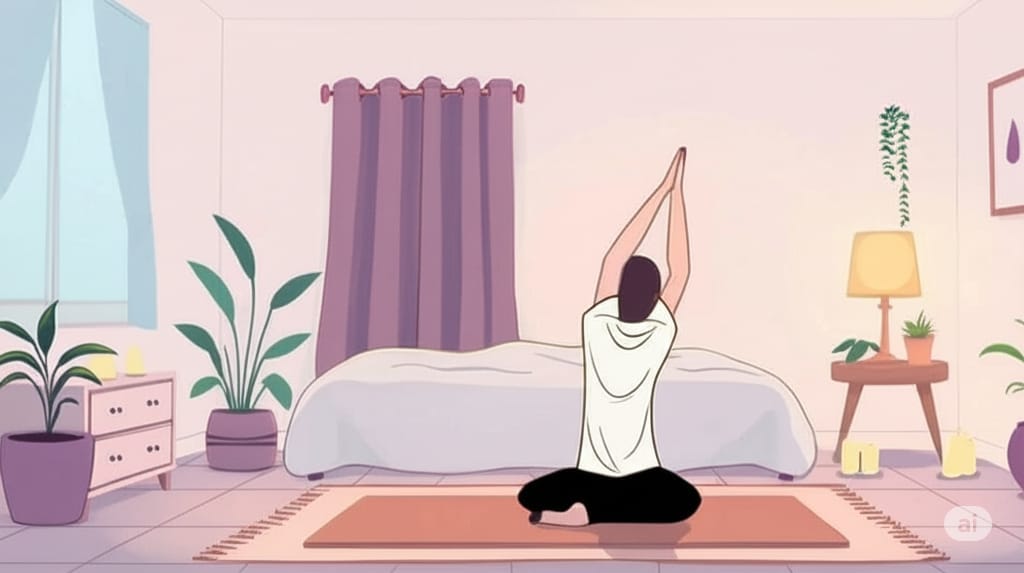 Using breathing exercises and visualization can be part of yoga or done alone before bed. Doing these regularly helps improve sleep and brings deep relaxation through yoga.
Using breathing exercises and visualization can be part of yoga or done alone before bed. Doing these regularly helps improve sleep and brings deep relaxation through yoga.
When is the Best Time to Do Yoga for Sleep?
Doing yoga at the right time can make all the difference. Aim for 30 minutes before bedtime to allow your body and mind to settle.
A slow-paced yoga session of 10 to 20 minutes is enough to see real benefits.
Yes, doing it every night builds a stronger mind-body habit. Just like brushing your teeth, yoga can become a sleep cue.
Are There Any Precautions or Tips for Doing Yoga at Night?
Not all yoga styles are suitable before bed. Avoid intense flows like Vinyasa or hot yoga.
- Choose gentle yoga sequences
- Dim the lights, wear comfy clothes, keep noise low
- Avoid screen time at least 30 minutes before starting
These small changes add up and support your stress relief techniques.
Creating a Relaxing Sleep Environment
Getting good sleep is more than just doing a Calming Yoga Sequence or Bedtime Yoga Routine. You also need a sleep-friendly space. A few changes in your bedroom can help you sleep better.
Tips for Setting Up Your Space
Begin by dimming your bedroom lights. Bright lights, especially blue light from screens, can mess with your sleep. Use soft, warm lights or curtains to make it cozy.
Your bedding should feel good and look nice. Pick soft fabrics and make sure your mattress and pillows are comfy. Try adding essential oils like lavender to relax more.
Importance of Lighting and Temperature
The best bedroom temperature for sleep is between 65°F and 70°F. A cooler room helps your body temperature drop, which is good for sleep. Adjust your thermostat and use fans or AC if it’s too hot.
It’s also key to avoid screens before bed. The blue light from phones and laptops can stop you from falling asleep. Try to stop using devices 30 minutes to an hour before bed.
By making your bedroom sleep-friendly, you’ll get more out of your yoga routines. This leads to better sleep and health.
What Are the Long-Term Benefits of Practicing Yoga Before Sleep?
Doing yoga regularly can reshape how your body handles stress and rest.
Long-Term Perks:
- Better sleep quality
- Improved heart rate variability (HRV)
- Lower nighttime cortisol levels
- Sharper focus during the day
- More emotional balance
Here’s a quick progress table based on a 4-week routine:
| Week | Sleep Quality | Stress Level | Energy Next Day |
|---|---|---|---|
| 1 | Slightly better | Still high | Low |
| 2 | Moderate | Dropping | Medium |
| 3 | Deep sleep | Low | Higher |
| 4 | Excellent | Very low | Consistent high |
Take Control of Your Sleep with the Right Yoga Practice
If you’re tired of tossing and turning, it may be time to ditch the screens and pick up the mat. These yoga poses for better sleep and relaxation can change how you wind down at night. They don’t just help you fall asleep; they help you feel good the next day too.
Being consistent is key to getting better sleep from yoga. Start a bedtime yoga routine, even if it’s just a few minutes. Try different Yoga Poses for Better Sleep to find what works for you. Remember, the effects of Sleep Yoga build up over time. With regular practice, yoga can help you sleep better.
Need a tailored sleep strategy or dealing with deeper neurological concerns? Book a consultation with Dr. Chandril Chugh, a U.S.-trained, board-certified neurologist.
FAQ
How can yoga help with better sleep and relaxation?
Yoga before bed can make you fall asleep faster. It also makes sleep better. Yoga poses and breathing help calm your body and mind.
What are some of the best yoga poses for sleep and relaxation?
Good yoga poses for sleep include Child’s Pose and Legs Up the Wall. Also, Supine Twist, Cat-Cow Stretch, Seated Forward Bend, and Corpse Pose are great. These poses stretch and calm your mind.
How does mindfulness and breathing exercises enhance the benefits of bedtime yoga?
Mindfulness and deep breathing make yoga more relaxing. Slow breathing activates your calm system. Visualization clears your mind, helping you relax deeper.
What environmental factors are important for a good night’s sleep after yoga?
A good sleep environment is key. Dim lights and comfy bedding are important. Keep your room cool and avoid screens before bed. Calming scents, like essential oils, can also help.
How important is consistency in a bedtime yoga practice for better sleep?
Being consistent is crucial for yoga’s sleep benefits. A regular bedtime yoga routine improves sleep over time. Be patient, as yoga’s sleep benefits grow with regular practice.
About The Author

This article is medically reviewed by Dr. Chandril Chugh, Board-Certified Neurologist, providing expert insights and reliable health information.
Dr. Chandril Chugh is a U.S.-trained neurologist with over a decade of experience. Known for his compassionate care, he specializes in treating neurological conditions such as migraines, epilepsy, and Parkinson’s disease. Dr. Chugh is highly regarded for his patient-centered approach and dedication to providing personalized care.
→ Book a consultation to discover which remedies suit your needs best.


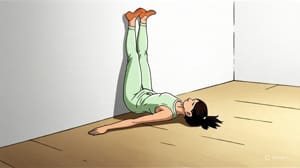
 Cat-Cow Stretch: A Calming Flow
Cat-Cow Stretch: A Calming Flow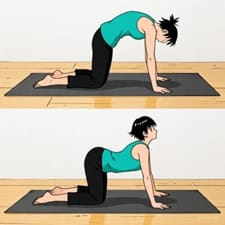 Seated Forward Bend: Stretching the Spine
Seated Forward Bend: Stretching the Spine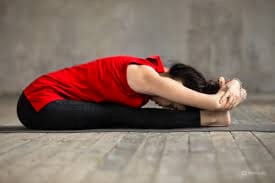 Effects on Sleep Quality
Effects on Sleep Quality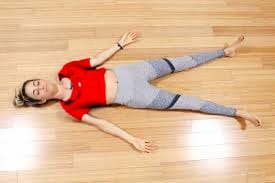 Key Mindfulness Practices for Sleep
Key Mindfulness Practices for Sleep